Harshberger illustrates life of cheer
Courtesy of Caitlin Harshberger
Comp time. Senior Caitlin Harshberger prepares for her back tuck during a competition. Her team won a few competitions this year and plans on competing in the D2 Summit.
February 11, 2022
When someone thinks of cheerleading, he or she may think of the football sidelines, pom poms and school spirit, but in reality, there is an entire other side to the sport. In a cheerleader’s perspective, competitive cheer is a group of girls or boys working together to perform and execute a routine with tumbling, stunts, jumps and dance. Many high schools and colleges have a competitive cheerleading team. A type of cheer aside from school cheer is called Allstar Cheer.
What is Allstar Cheer?
According to USA Cheer, “Allstar Cheer is a discipline of cheer that involves athletes performing a two and a half minute routine composed of tumbling, stunting, pyramids, dance and cheer segments.”
Most teams have a gym where they meet to practice. Some cheerleaders, like senior Caitlin Harshberger, travel just to cheer.
“When someone says ‘their gym’ it is also known as where they compete and cheer with their teammates. My gym is also known as my ‘second home’ and any time I have to be at my gym I am there,” Harshberger said.
Harshberger has been cheering since she was 2 years old. She started out with gymnastics, but got into cheerleading when her mom put her into tumbling classes at Cheer Factor Allstars.
“My past seven years I have cheered at the gym that started my cheer career for me. My old gym taught me a lot throughout my years of cheer and helped me achieve many of my goals in my cheerleading journey,” Harshberger said. “My biggest goal in my cheer career is to always work hard, show up and to always be the best I can be.”
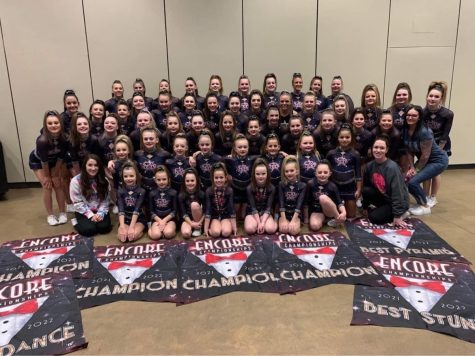
Harshberger also supported younger athletes at her gym.
“In the past, I have been involved with the younger kids at the gym by coaching three teams, doing private lessons and [I was] always there to support the younger teams. It is honestly one of the best things that can come with cheer. I love watching young athletes gain skill and become a better athlete,” Harshberger said.
School cheer versus competitive cheer
According to Harshberger, the difference between Allstar and school cheer is skill level and time commitment.
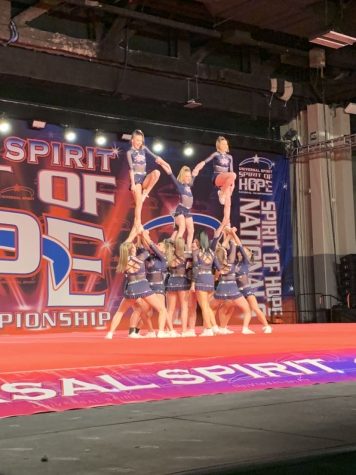
“My opinion of differences between school cheer and competitive cheer is that school cheer is not as vigorous and time consuming compared to Allstar Cheer. School cheer is about cheering on your team and having cheers for each part of the game. There is no chanting or pom poms with Allstar Cheer. It consists of high skilled tumbling, higher level stunting and technically taught skills. Each step taken in Allstar cheer is accounted for and nothing is ever missed by a judge,” Harshberger said.
Although Harshberger used to cheer for the school, she simply doesn’t have the time anymore.
“I have done school cheer from fourth to ninth grade. I decided to cheer for the high school competitive team my ninth grade year. With my busy schedule in Allstar Cheer, I decided it would be easier for me to just drop school cheer because I couldn’t make it to a lot of the games because I would have mandatory practice for Allstar Cheer. I also thought it would be better for me to focus on Allstar Cheer because that is my passion and my mom pays a lot of money throughout the years for me to compete and practice.
A fresh start
With new opportunities arising for Harshberger, she decided to go to a new gym.
“This year is my last year of Allstar Cheer, and I felt like I wanted new opportunities, different experiences, new teammates and a new hardworking, successful atmosphere for my senior year. Leaving my gym of seven years was one of the hardest decisions I ever had to make, but in order for me to be happy, I had to do what is best for me,” Harshberger said.
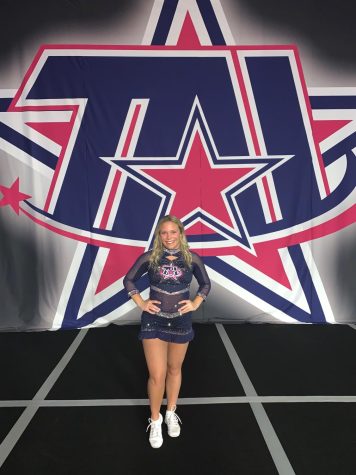
Teams in Allstar cheer are categorized by skill level. Tiny age is 5-6, mini is age 5-8, youth age is 5-11, junior age is 6-16 and senior age is 12-18 years old. The skill of the cheerleaders can go up to level seven. Now, she travels to a gym in Indiana, Pa called TAI. She is on a Senior Small All Girl Level Four and the team name is Ice Queens.
“Throughout my short months there, I have learned many different skills in cheer and in life, made many new lifelong friendships, learned the true meaning of success and most importantly gained back my love for allstar cheerleading,” Harshberger said. “My favorite thing about my new gym is the determination and drive of every athlete and coach that steps foot in the gym or at competitions.”
What is competition season like for a competitive cheerleader?
A normal cheer season for Harshberger is from the months of June to May.
“I practice two to three days a week for two hours and have mandatory tumbling twice a week. I have about six competitions a year. Competitions are all around and in different states. This year I will compete in Baltimore Md., Charlotte N.C., Atlanta Ga., Dallas Texas, Columbus Ohio, Pittsburgh Pa. and Orlando Fla.,” Harshberger said.
According to Harshberger, a competition is a lot more than anyone would expect. In all, competitions usually last for two days: Saturday and Sunday. The judges take 25 percent on day one and 75 percent on day two. It is then evened out and the teams are left with a “raw score.”
“We meet at a certain time in the hall we are assigned to perform in. Then we all go back to warm ups together. Warm up consists of four floors. First is stretch, next is stunts, next is tumbling and last is a full mat. The last mat is where you do anything you need to do before you go out on the competition floor. The last mat you do a run through with your music. Then when you’re done on that floor you head to the back of the stage. There’s usually two teams ahead of you and it’s called ‘being in the hole.’ Then you move to ‘on deck.’ Then you perform on the competition floor. The competition floor has bright lights, cheering parents, loud music and the panel of about 25 judges [who] are about 50 feet away from you,” Harshberger said.
One of the biggest competitions that Harshberger attended was the D2 Summit which is a championship event in Orlando Fl at the ESPN Cheer Arena. Teams from all over the world compete.

“There is a D2 and a D1 Summit. D1 gyms have a large amount of kids or numerous locations and D2 gyms have a smaller amount of athletes and usually just one location,” Harshberger said. “Varsity is the brand that is the control system of Allstar Cheerleading. Varsity competitions happen all over the world and in order to go to [the] Summit you have to acquire a bid. Getting a bid to the D2 Summit is challenging and only the best of the best teams get to go. It goes by scores from day one which is 25 percent and day two which is 75 percent. You then get a raw score and the highest scores in each division can be rewarded with a bid. There are three types of bids given in the D2 divisions. They have wildcard bids which will compete Friday, at large bids which will compete Saturday and paid bids which will also compete on Saturday. Day one is semifinals [Saturday] and day two is finals [Sunday]. Making it to finals is not a guarantee and it all depends on your division standing after Friday or Saturday. I have competed in the D2 summit from the years of 2017-2022. In 2020 it was canceled due to COVID-19.”
According to Harshberger, competitions are huge in the Allstar Cheer world.
“There are about 200 teams at a competition. Cheersport Nationals holds about 40,000 athletes at the event. The D2 Summit holds about 80,000 athletes. Other teams are from places all around the world. Some of the teams we are against are from Florida, Ohio, Georgia and Texas,” Harshberger said.
At competitions, judges look for specific skills such as routine composition, technique, timing of skills, execution of skills, sportsmanship and performance skills. Although usually only teams win awards, individual cheerleaders can too.
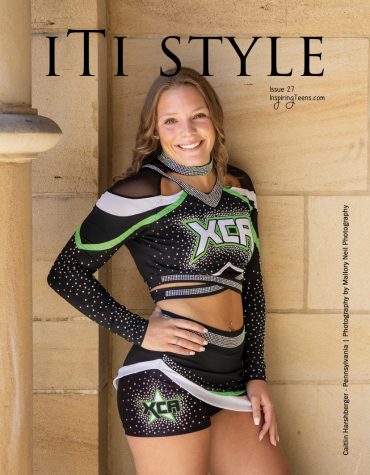
“There are prizes you win at national championships such as jackets, fanny packs, backpacks and medals. These are all team based prizes,” Harshberger said. “In 2020, I was awarded ‘Athlete of the Year’ at the America’s Best Cheer Competition and received a trophy for winning this award. I also received the biggest role model and most passionate in 2021 from my old gym. In 2020 I was [also] awarded the Inspiring Teen Magazine Cover.”
Among Harshberger’s strengths, there also comes weaknesses.
“My biggest strength is working together to make something work. Another strength I feel like I have on the floor is stunting; I am a base. I also have the strength of being a leader in what I do,” Harshberger said. “My one weakness I have when it comes to cheer is that I try to be a perfectionist in all that I do. This is one of my worst weaknesses because I feel as though if I don’t do something right the first time I will never get it, and no one should feel like that in a sport or in everyday life.”
While stunting may be one of her strengths, Harshberger loves to do one specific tumbling trick.
“In my opinion the coolest tumbling trick I have is a roundoff whip handspring full. A full is a layout which is a back tuck with your legs straight and [the] body is hollowed out, but instead of just flipping over, you do a full spin upside down and then land. This is my favorite as of now,” Harshberger said.
Memories and future ambitions
With 16 years of cheer under her belt, Harshberger has many good memories.

“Throughout my cheerleading journey, I have made many memories that I will remember for a lifetime and will take with me on my hardest days,” Harshberger said. My all time favorite memory as of now was hitting both days with my new team, which means having no mistakes or zero deductions, on both days at one of the biggest competitions in the world which was the Spirit of Hope National Championship. That feeling of hitting both days was one of the best feelings I could have ever felt because I finally had a team of determined, driven athletes with me to celebrate. We ended that weekend as Spirit of Hope National Champions and also had the highest D2 score of the whole competition,” Harshberger said.
With consistent practicing and competing, Harshberger finds it difficult to maintain a social life.
“My social life during the competition season is very hard. I don’t have a lot of free time during the season. In my free time I like to hang out with cheer friends and Josh as well as work on my skills at home. My social life is kind of challenging throughout the season. Josh and I have been together for five years now, and making time to see each other during the week is always a struggle. I also like to work to better myself at home to be ready for practice and upcoming competitions,” Harshberger said.
Although Harshberger originally thought this would be her last year, she now has other plans for her future.
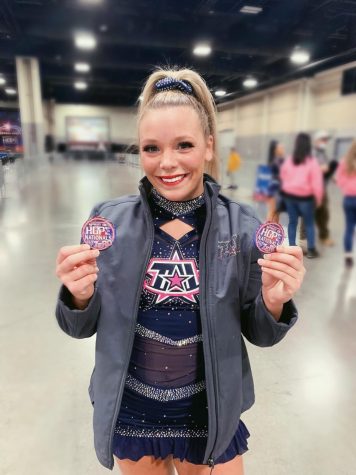
“At the beginning of the year, I thought that this was going to be my last year of Allstar Cheer, but in past days I have made the choice that since my birthday allows me to have one last year of Allstar Cheer, I may do another year and super senior, which means to do another year after you graduate high school. I also am planning on cheering in college at Saint Francis,” Harshberger said.

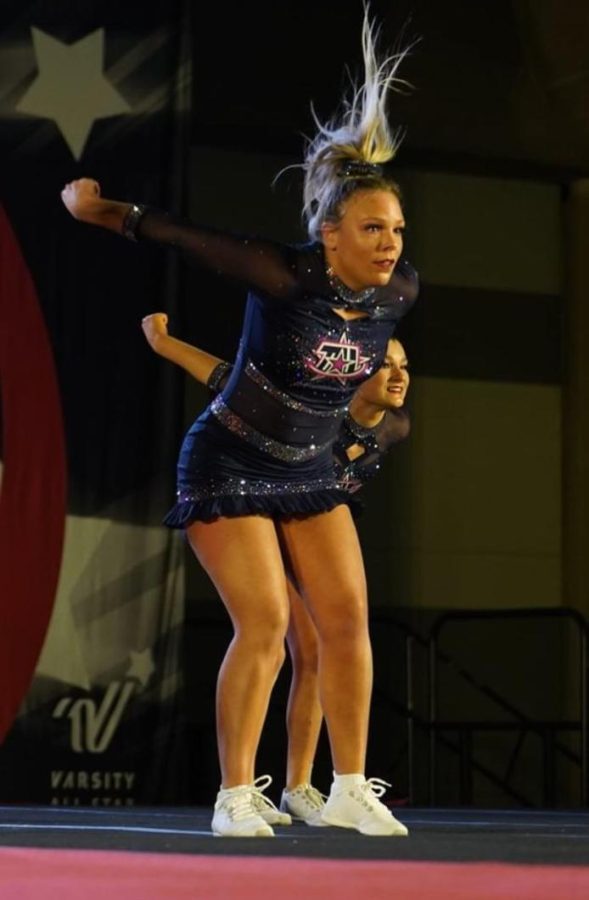


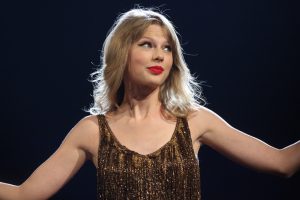


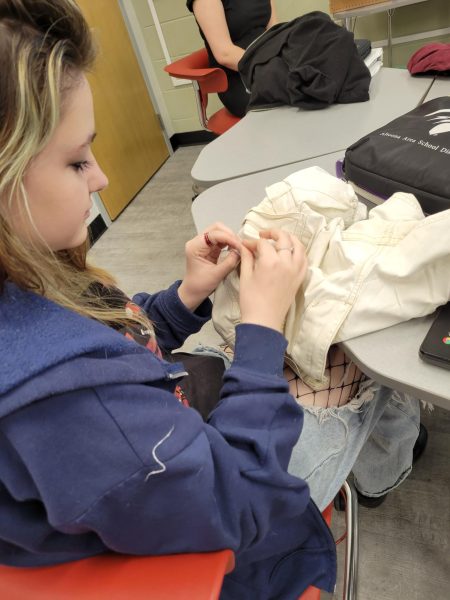
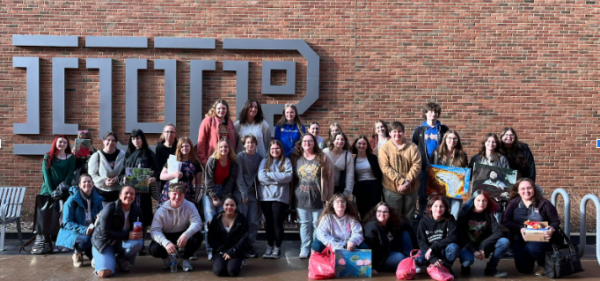


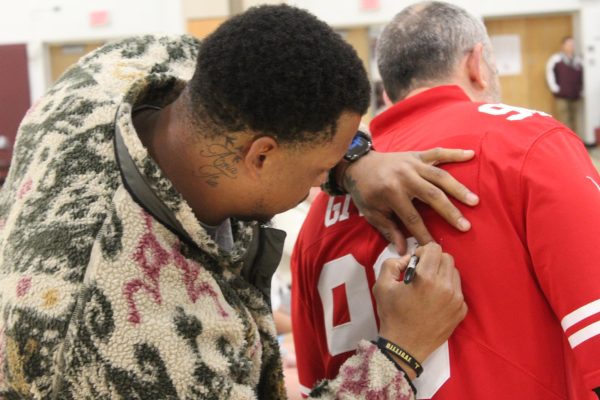
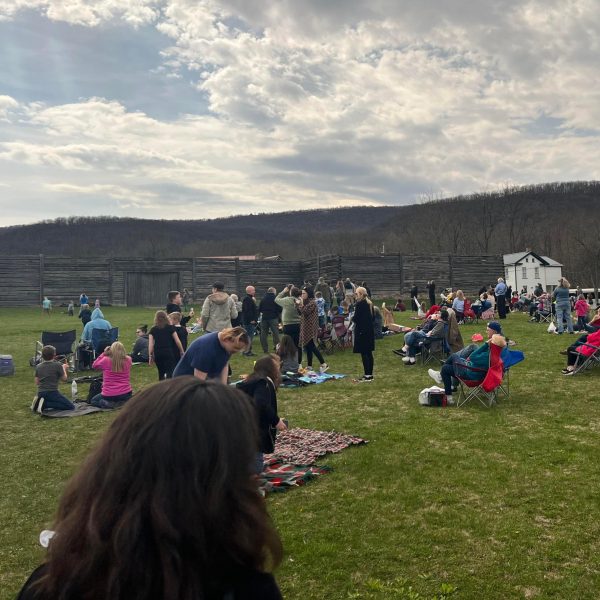
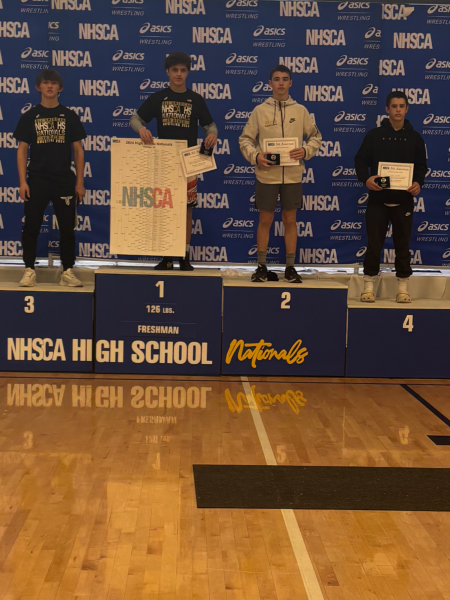
![Dedicated. Teachers who live far away commute for at least an hour to work each day. [Made with Canva]](https://aahsmountainecho.com/wp-content/uploads/2024/04/teacher-commute-picture-424x600.png)

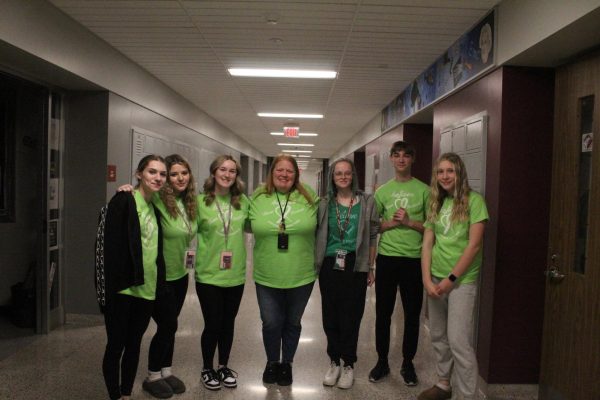
Angel Shultz • Feb 19, 2022 at 7:27 am
Very thorough article
Elizabeth Despot • Feb 13, 2022 at 2:46 pm
Great article. Very informative & interesting. Congrats to Caitlin